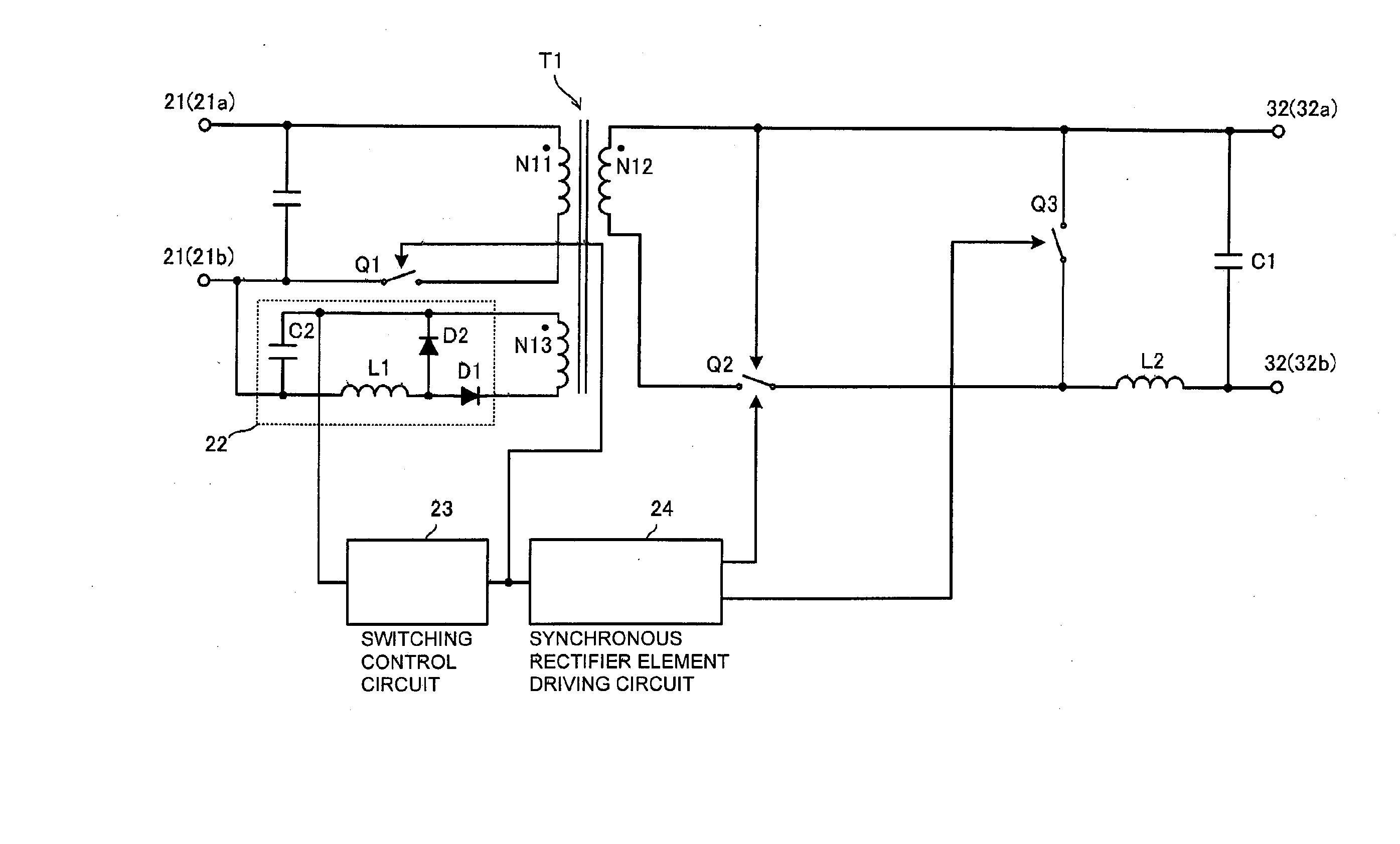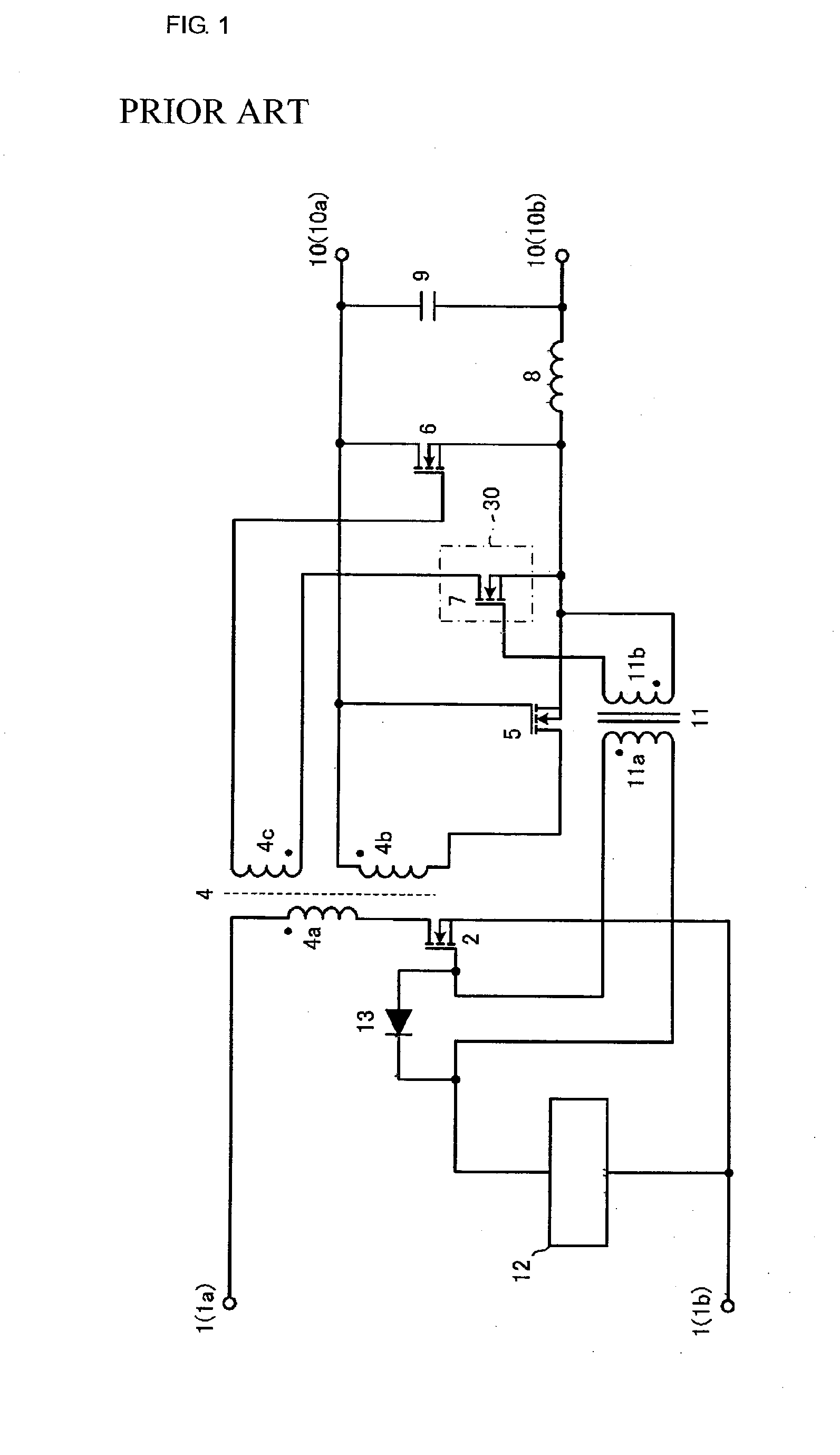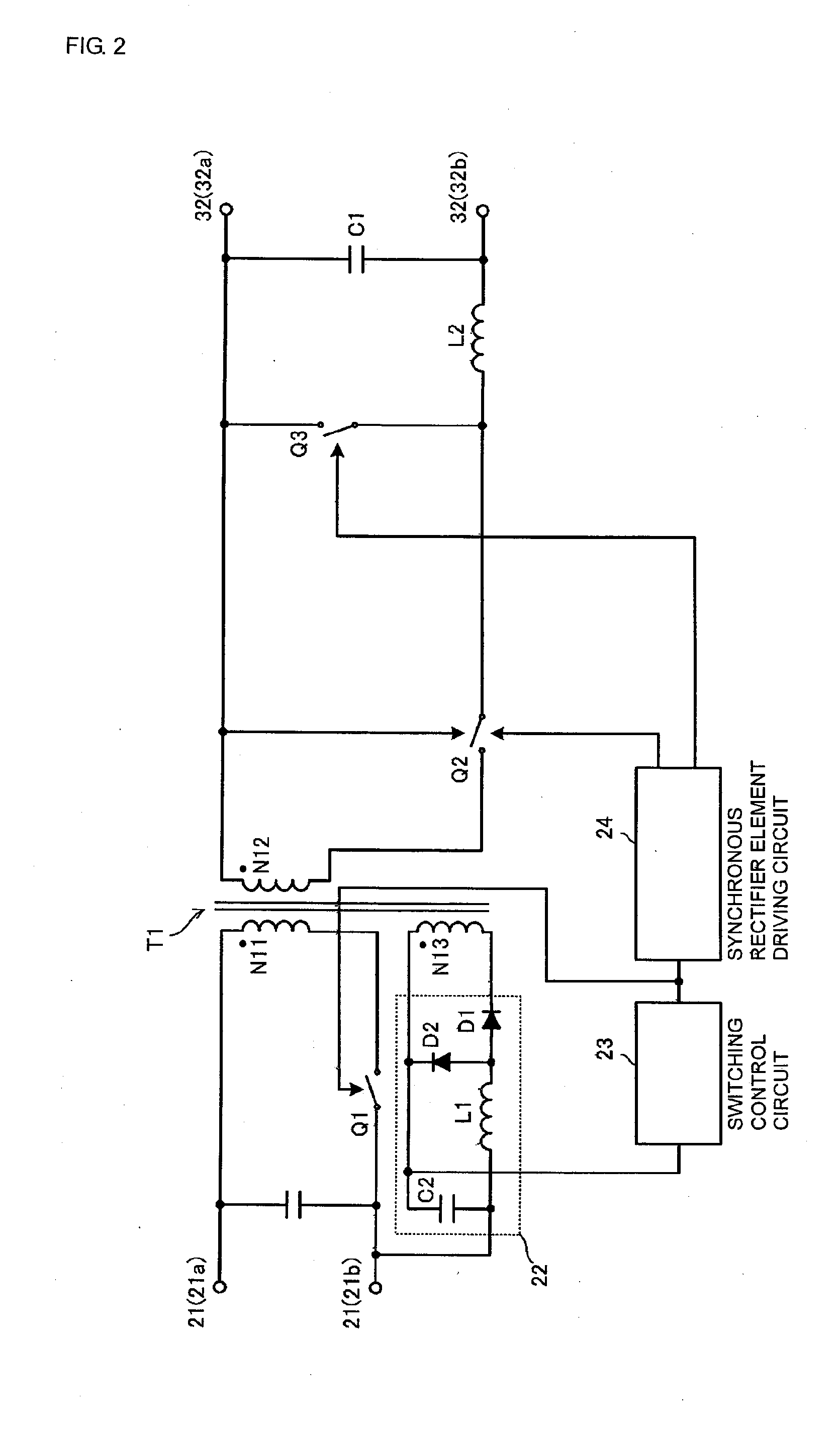Synchronous rectifying forward converter
a forward converter and synchronous technology, applied in the field of forward converters, can solve the problems of inability to absorb reverse current from the output side, unstable circuit operation, etc., and achieve the effect of preventing self-excited oscillation, and reducing the number of components
- Summary
- Abstract
- Description
- Claims
- Application Information
AI Technical Summary
Benefits of technology
Problems solved by technology
Method used
Image
Examples
first embodiment
[0069] A configuration of a synchronous rectifying forward converter according to a first embodiment is described with reference to FIG. 2.
[0070]FIG. 2 is a circuit diagram of the synchronous rectifying forward converter. Part of this figure is illustrated with blocks and symbols. As shown in FIG. 2, a main transformer T1 includes a primary winding N11, a secondary winding N12, and a tertiary winding N13. The primary winding N11 connects in series to a main switch element Q1, and a capacitor is connected between input terminals 21 (21a and 21b). The secondary winding N12 of the main transformer T1 connects in series to a choke coil L2 and a rectifying switch element Q2, and a smoothing capacitor C1 is connected between output terminals 32 (32a and 32b). Also, a commutating switch element Q3 forms a loop together with the choke coil L2 and the smoothing capacitor C1 and is placed at a position in a commutating path during release of excitation energy of the choke coil L2.
[0071] The...
second embodiment
[0118] Hereinafter, a configuration of a synchronous rectifying forward converter according to a second embodiment is described with reference to FIGS. 4 to 6.
[0119]FIG. 4 is a circuit diagram of the synchronous rectifying forward converter according to the second embodiment, and FIGS. 5 and 6 are waveform diagrams of a main part thereof.
[0120] As shown in FIG. 4, the switching control circuit 23 operates by using an output from the tertiary rectifying and smoothing circuit 22 as power and includes a switching controlling IC 230 to receive divided voltage from resistors R2 and R3 of the same output. The switching controlling IC 230 outputs switching control signals to the gate of the main switch element Q1 via primary windings N21 and N31 of pulse transformers T2 and t3. At that time, the switching controlling IC 230 performs PWM control on the main switch element Q1 so that the above-described divided voltage match a reference voltage on the basis of the received divided voltage ...
third embodiment
[0134] Hereinafter, a configuration of a synchronous rectifying forward converter according to a third embodiment is described with reference to FIGS. 7 and 8.
[0135]FIG. 7 is a circuit diagram of the synchronous rectifying forward converter according to the third embodiment, and FIG. 8 is a waveform diagram of a main part thereof.
[0136] In the third embodiment, the gate of the rectifying switch element Q2 connects to one end of the secondary winding N12 of the main transformer T1, and the rectifying switch element Q2 is controlled with the voltage of the transformer as in a known art. On the other hand, the output voltage of the control voltage signal generating circuit 26 is applied between the gate and source of the commutating switch element Q3 via the controlling switch element Q7. The controlling switch element Q6 is connected between the gate of the controlling switch element Q7 and the ground. Also, the commutating switch controlling switch element Q4 is connected between t...
PUM
 Login to View More
Login to View More Abstract
Description
Claims
Application Information
 Login to View More
Login to View More - R&D
- Intellectual Property
- Life Sciences
- Materials
- Tech Scout
- Unparalleled Data Quality
- Higher Quality Content
- 60% Fewer Hallucinations
Browse by: Latest US Patents, China's latest patents, Technical Efficacy Thesaurus, Application Domain, Technology Topic, Popular Technical Reports.
© 2025 PatSnap. All rights reserved.Legal|Privacy policy|Modern Slavery Act Transparency Statement|Sitemap|About US| Contact US: help@patsnap.com



